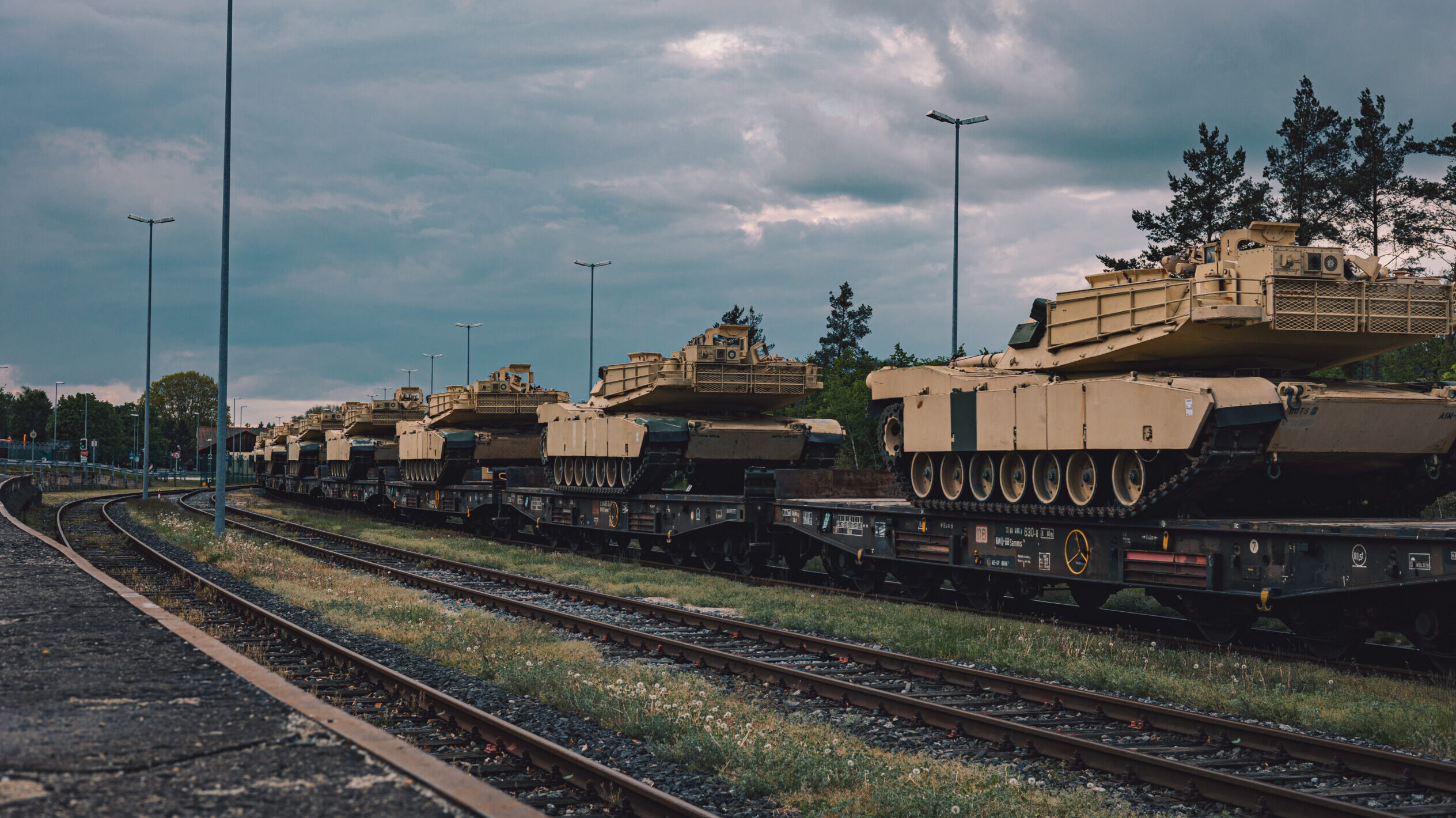
US M1A1 Abrams tanks needed for training Ukraine forces arrive by rail at Grafenwoehr, Germany in May 2023. (US Army/Spc. Christian Carrillo)
WASHINGTON — When the Pentagon delivered a slew of ground combat vehicles and air defense systems to Ukraine without a comprehensive sustainment plan, it created a potential risk for both nations, the Department of Defense Inspector General wrote in a pair of new reports.
The DoD IG office has penned several reports in recent months pointing towards roadblocks, or potential ones, in the flow of weapons to Ukraine, and this week released two more — one on DoD’s sustainment plan for Bradley, Stryker, and M1 Abrams main battle tanks and a similar one focused on Patriot battery deliveries.
In both cases, the inspector general determined that the Pentagon and US Army delivered the weapons without firm sustainment and training plans in place.
“Providing weapon systems to the [Ukrainian Armed Forces] UAF without a plan to ensure sustainment creates additional risks,” the office wrote in one report. “Specifically, the UAF may not be able to independently sustain US‑provided Bradleys, Strykers, and Abrams without a sustainment plan in the future.”
When it comes to those armored combat vehicles, the inspector general noted that the department did provide spare part packages, along with personnel and facilities to conduct field‑level maintenance through the end of FY24. However, lawmakers have not yet approved a FY24 spending bill, and an additional supplemental with funding for Ukraine remains in limbo. But beyond 2024, the department acknowledged it does not have an armored vehicle sustainment plan related to:
- spare parts, consumables, ammunition, and support equipment;
- the recommended depot‑level training for Ukrainians;
- personnel who would provide depot‑level maintenance; and
- facilities for depot‑level maintenance.
The DoD IG spotted similar problems with the sustainment and training for those Patriot batteries provided to Ukraine. The department did provide Ukrainian soldiers with basic operation and maintenance training at Fort Sill, Okla., and in Poland, along with an initial package of spare parts and establish remote maintenance capabilities via a 12-month contract. However, DoD and Army officials didn’t establish additional training for advanced life-cycle maintenance tasks, a process for anticipating additional sustainment or a “dependable supply system” for ordering, shipping, and receiving replacement parts, the inspector general wrote.
“Providing Patriot air defense systems to the UAF without a strategy for sustainment increases risks to both the DoD and Ukraine,” the DoD IG wrote. “Specifically, Ukraine may not be able to independently sustain the systems, and the DoD may face challenges supporting Patriot systems in Ukraine while still maintaining readiness of US Patriot air defense systems.”
Accordingly, it recommended several steps, including for the Under Secretary of Defense for Policy and the Under Secretary of Defense for Acquisition and Sustainment to develop and implement such a sustainment strategy, and for those offices to examine funding sustainment options for those Patriot systems transferred to Kyiv.
Both shops partly agreed with the recommendations, and noted that FY23 dollars were provided for sustainment and that a cross-department working group was established to identify requirements for future security assistance decisions.
Pentagon Deputy Press Secretary Sabrina Singh told reporters today that the department welcomes these reports and that they shed light on potential improvements, but noted the unique circumstances of this war: One that the US is funneling billions of dollars towards but not sending its troops into.
“We have sent unprecedented security assistance to Ukraine at such a rapid rate, and Ukraine is right now modernizing its military in the middle of a war,” Singh said. “On top of that, we don’t have boots on the ground in Ukraine, we don’t have people out in the field, being able to do sustainment and maintenance alongside the Ukrainians, so we do offer telesupport.”
“We’re certainly aware that we could be doing more, but we’ve been saying from the beginning that we need to make sure that the Ukrainians have every tool available to them to maintain these systems,” she later added.
France, Germany ink deal on way ahead for ‘completely new’ future European tank
Defense ministers from both countries hailed progress on industrial workshare for a project that they say “will be a real technological breakthrough in ground combat systems.”


























